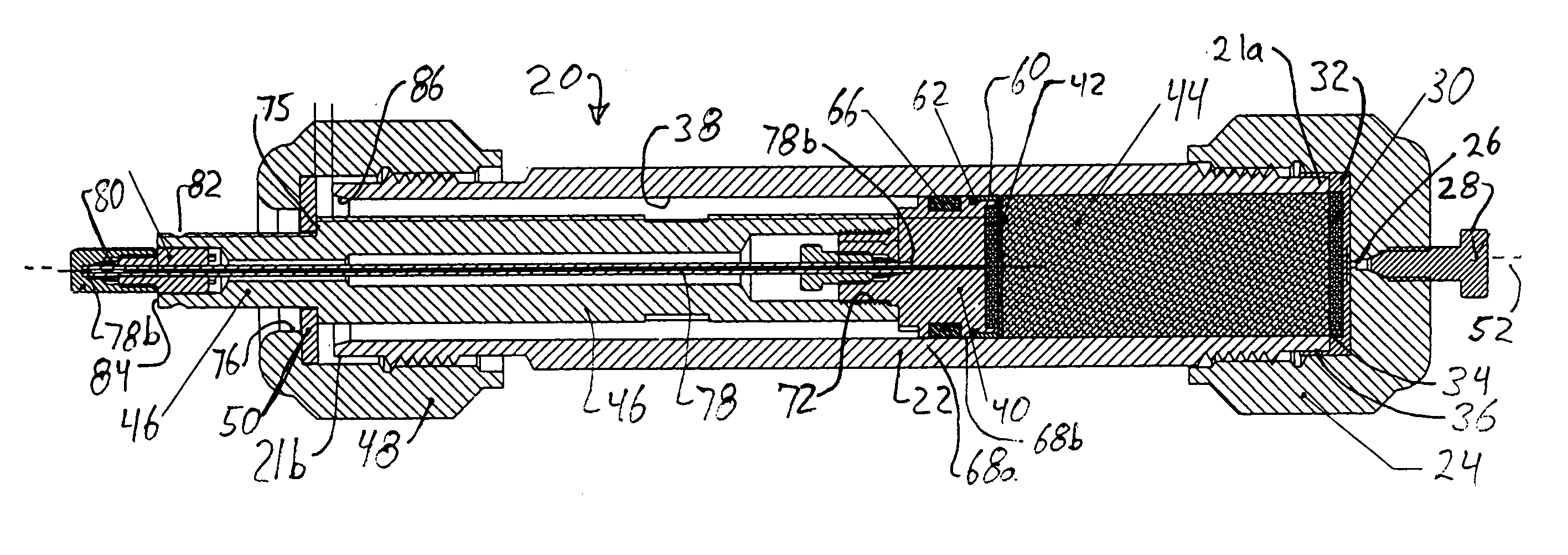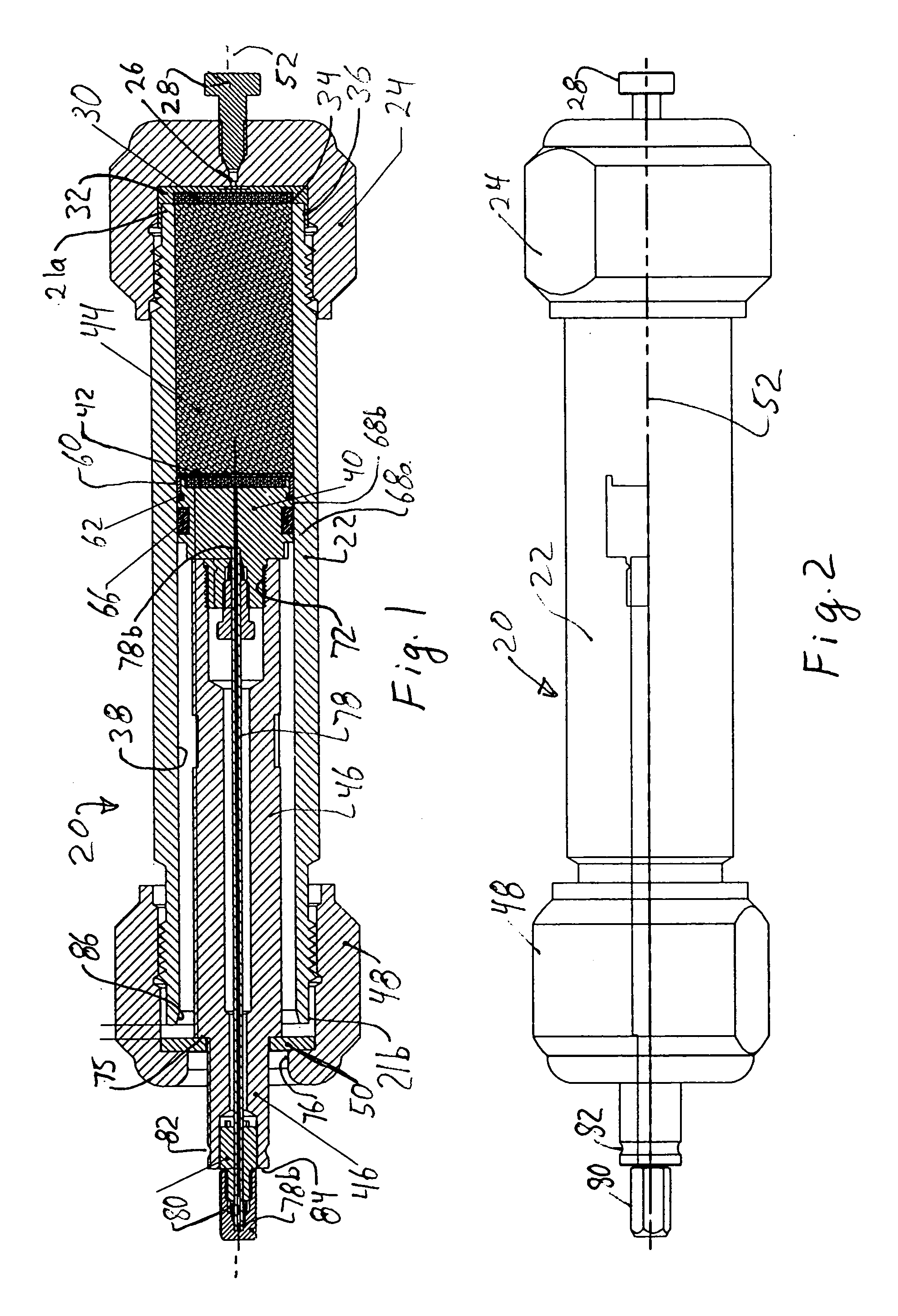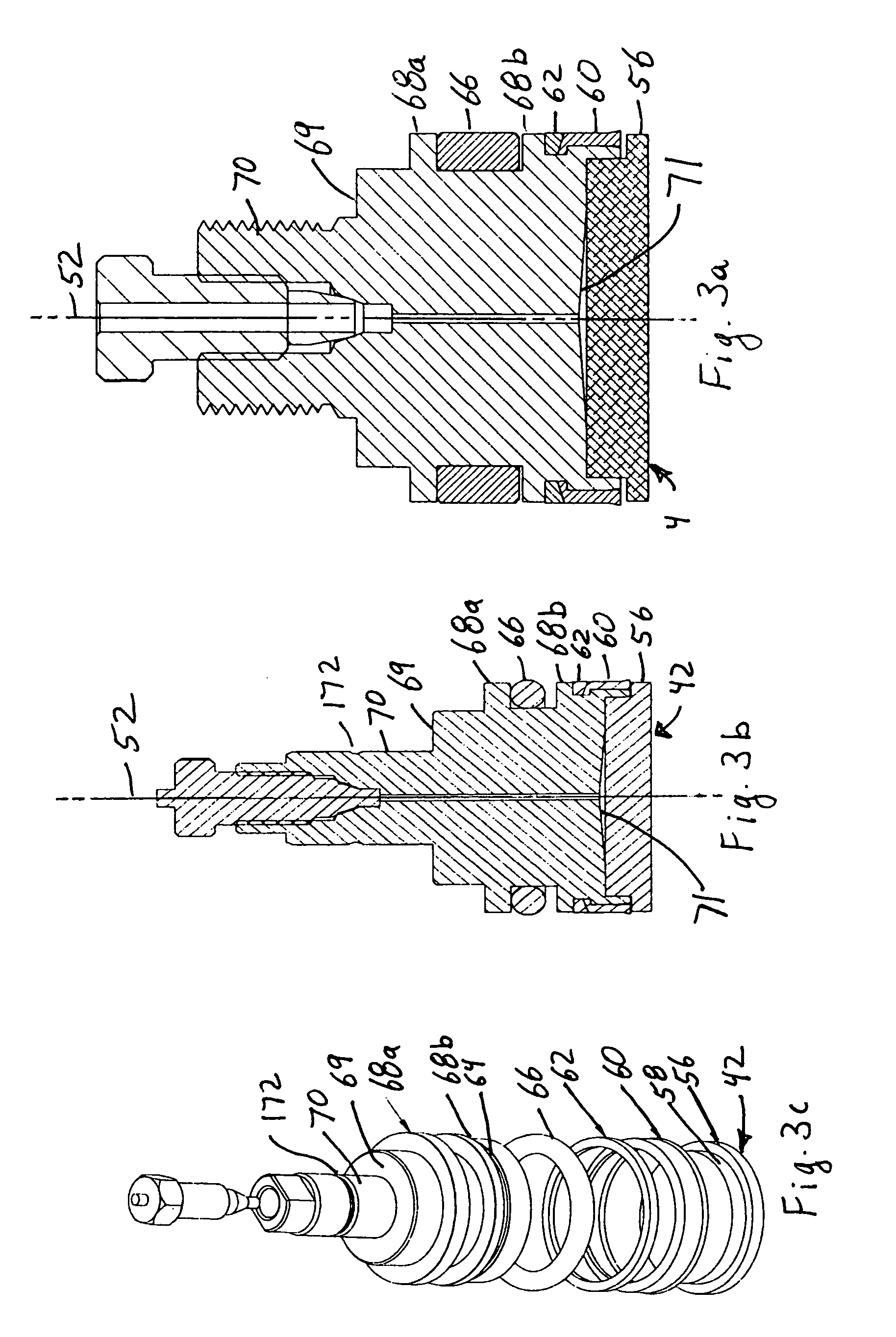Method and apparatus for packing chromatography columns
a technology of chromatography column and packing method, which is applied in the direction of ion-exchangers, separation processes, instruments, etc., can solve the problems of reducing manufacturing throughput, affecting the quality of chromatography column, and taking as long as one hour, so as to reduce the amount of solvent and production time, reduce the amount of solvent and the effect of less complex
- Summary
- Abstract
- Description
- Claims
- Application Information
AI Technical Summary
Benefits of technology
Problems solved by technology
Method used
Image
Examples
first embodiment
[0072] This first embodiment achieves a uniform hydraulic packing of the media 44 by piston 40 which is desirable for uniform flow of mobile phases passing through the stationary bed formed by the compacted media 44. But this embodiment requires a long body 22 and a long sleeve 46 which make the end column heavy, and which requires more material than desired. The body 22, sleeve, end caps 24, 48 are made of metal, typically stainless steel, and that material is not only heavy, but expensive. It is thus desirable to reduce the length of body 22 and eliminate, if possible, piston sleeve 46.
second embodiment
[0073] Referring to FIGS. 7-10, a second embodiment is described which uses the same piston 40 described above, but which uses a segmented body 122. For parts that are not changed the part numbers are not altered and are the description is not repeated.
[0074] The body 122 is formed of two parts, a removable, upstream tube 122a and a remaining downstream tube 122b. Both parts 122a, 122b are used for packing while removable tube 122a is removed for use, as described later in more detail. The upstream tube 122a forms a slurry chamber, while the downstream tube 122b forms the column. Tubes 122a, 122b are releasably joined by a removable, V-Band clamp. An optional wrenching surface 133 can be provided on the outside of body 122.
[0075] The slurry tube 122b has a length sufficient to hold the desired slurry media 44 prior to the media being packed. Preferably, but optionally, the length is also sufficient to accommodate at least a portion of piston 40. The upstream end 124 of column 122b ...
PUM
 Login to View More
Login to View More Abstract
Description
Claims
Application Information
 Login to View More
Login to View More - R&D
- Intellectual Property
- Life Sciences
- Materials
- Tech Scout
- Unparalleled Data Quality
- Higher Quality Content
- 60% Fewer Hallucinations
Browse by: Latest US Patents, China's latest patents, Technical Efficacy Thesaurus, Application Domain, Technology Topic, Popular Technical Reports.
© 2025 PatSnap. All rights reserved.Legal|Privacy policy|Modern Slavery Act Transparency Statement|Sitemap|About US| Contact US: help@patsnap.com



